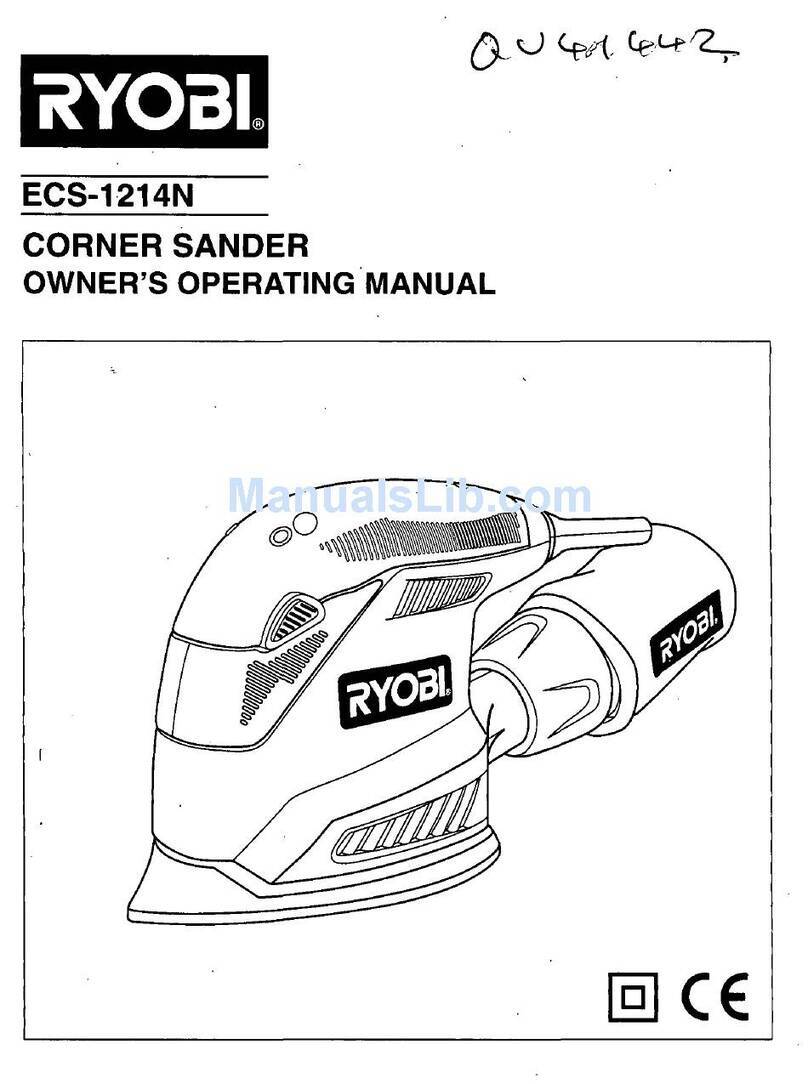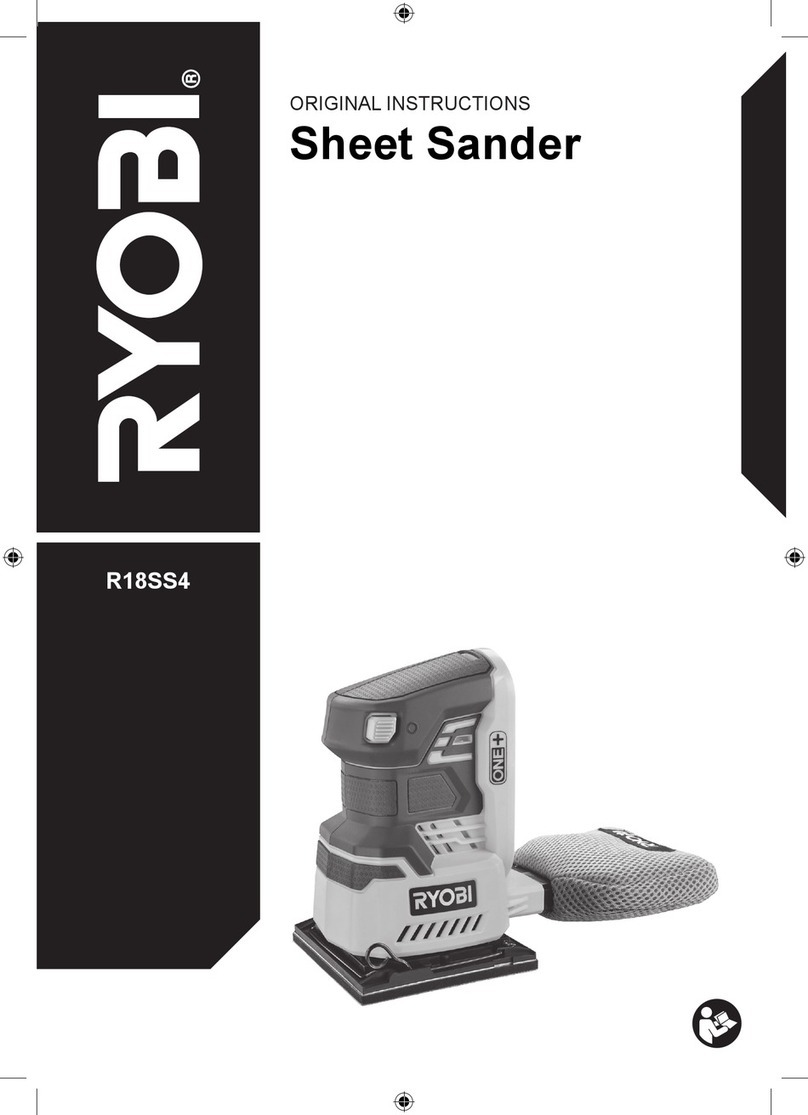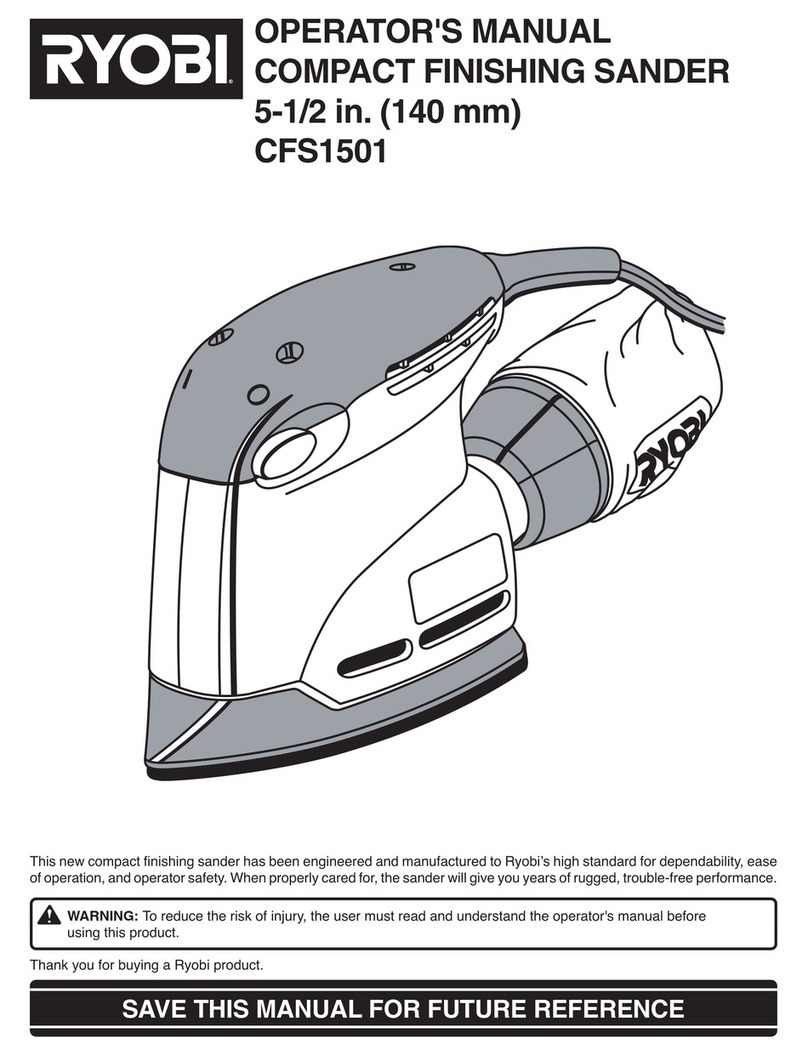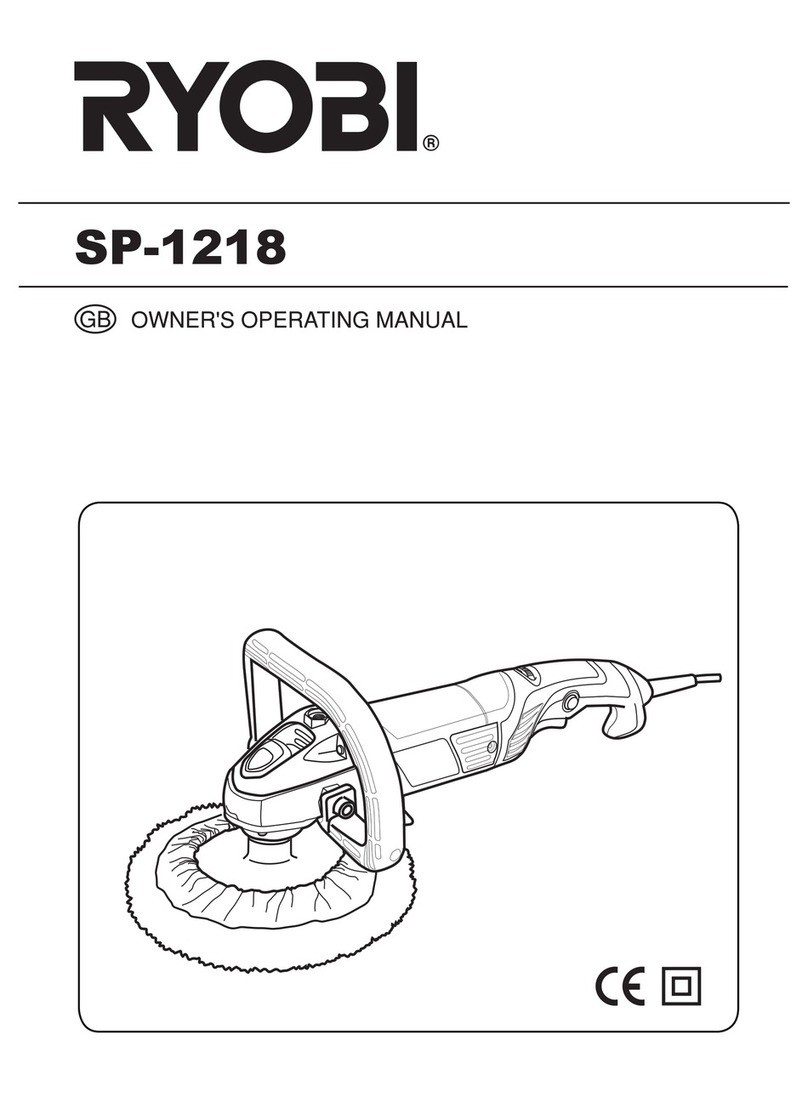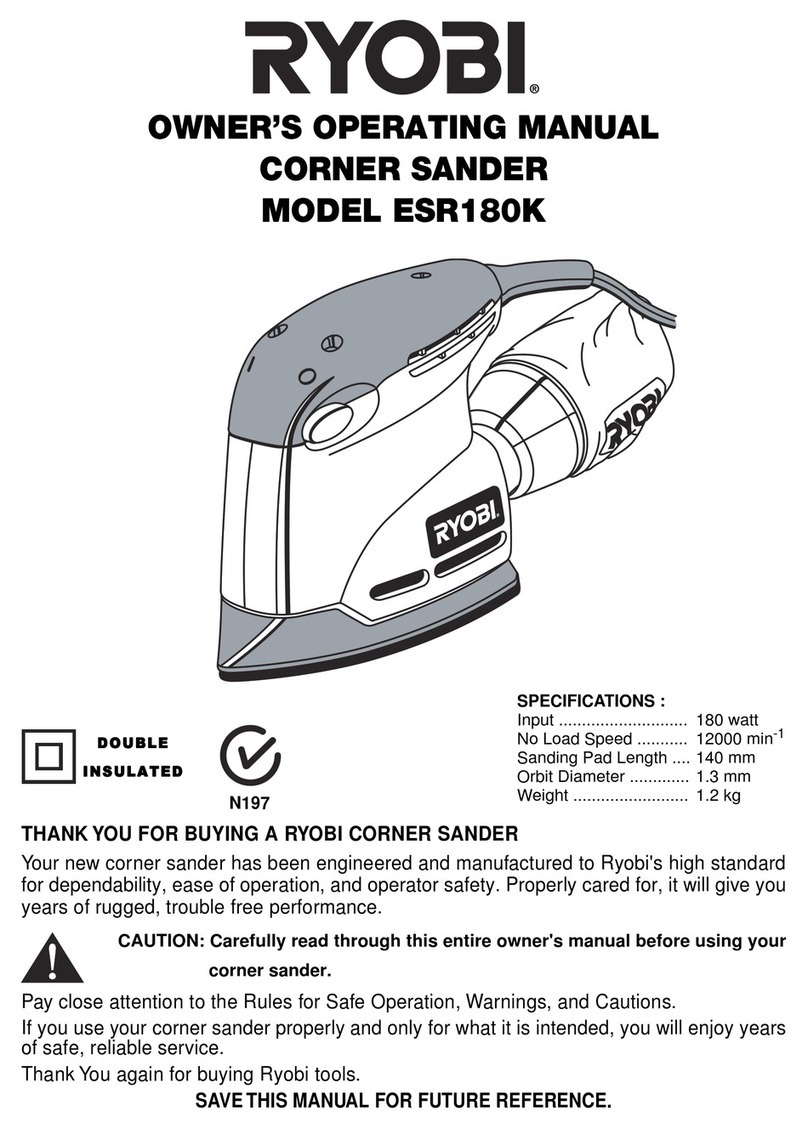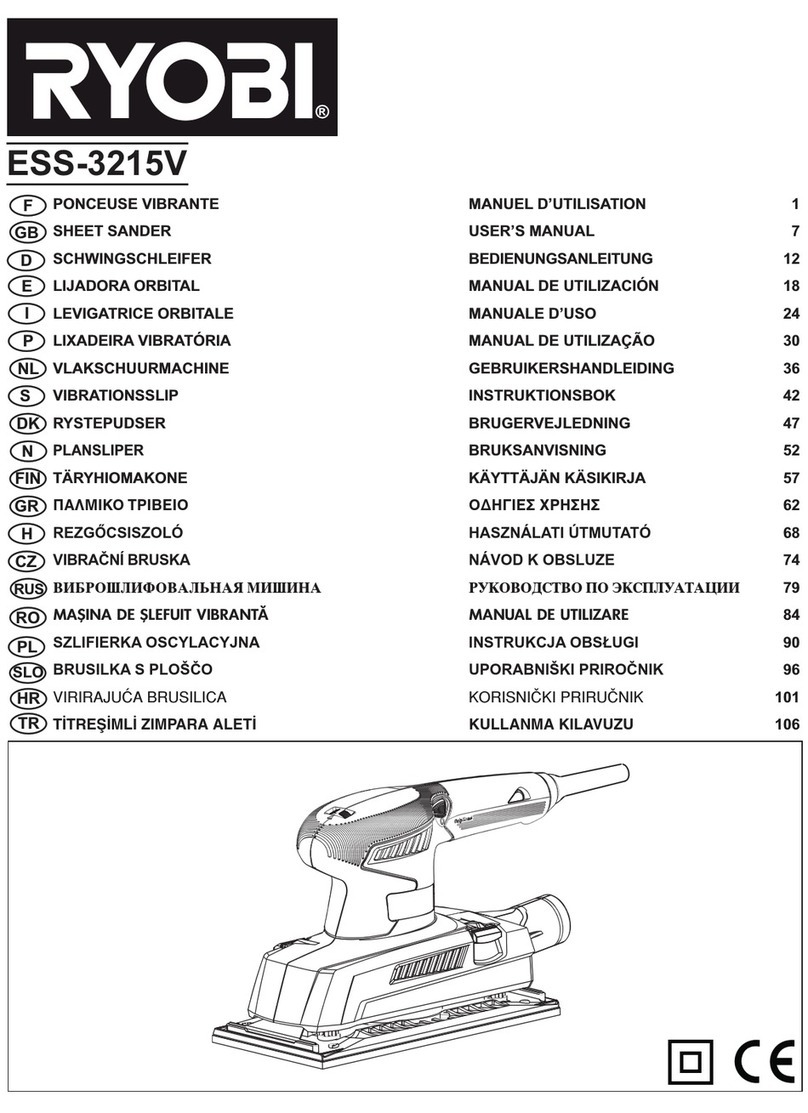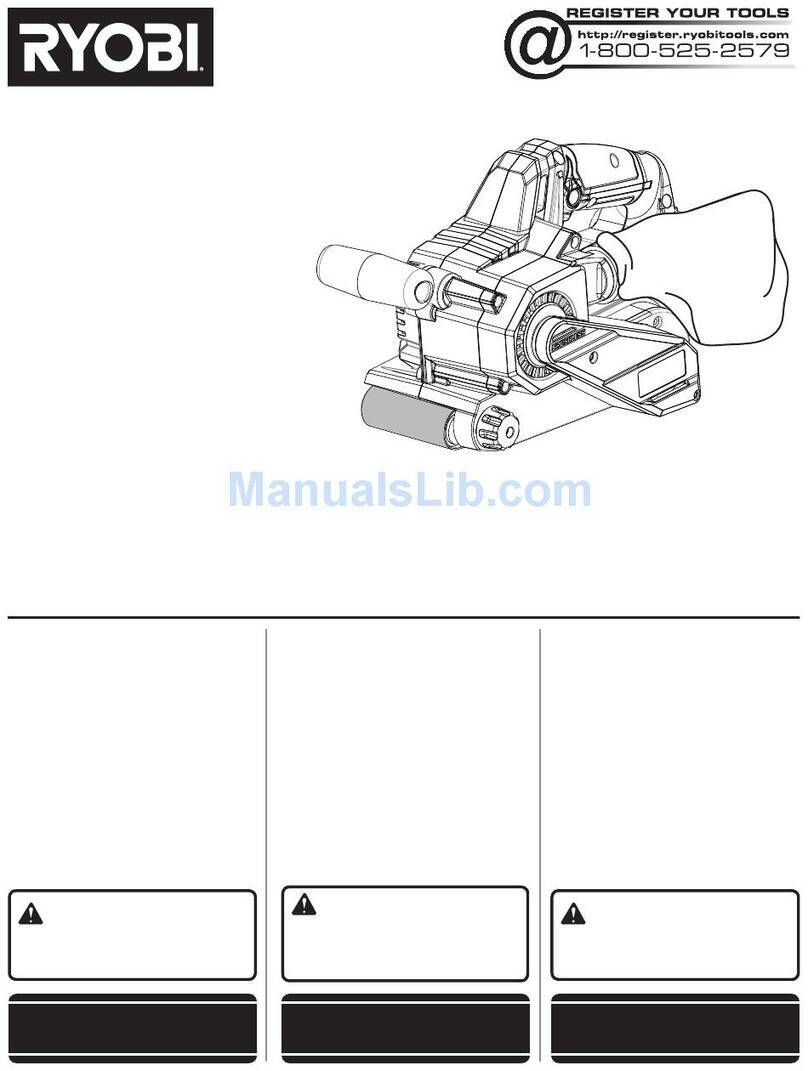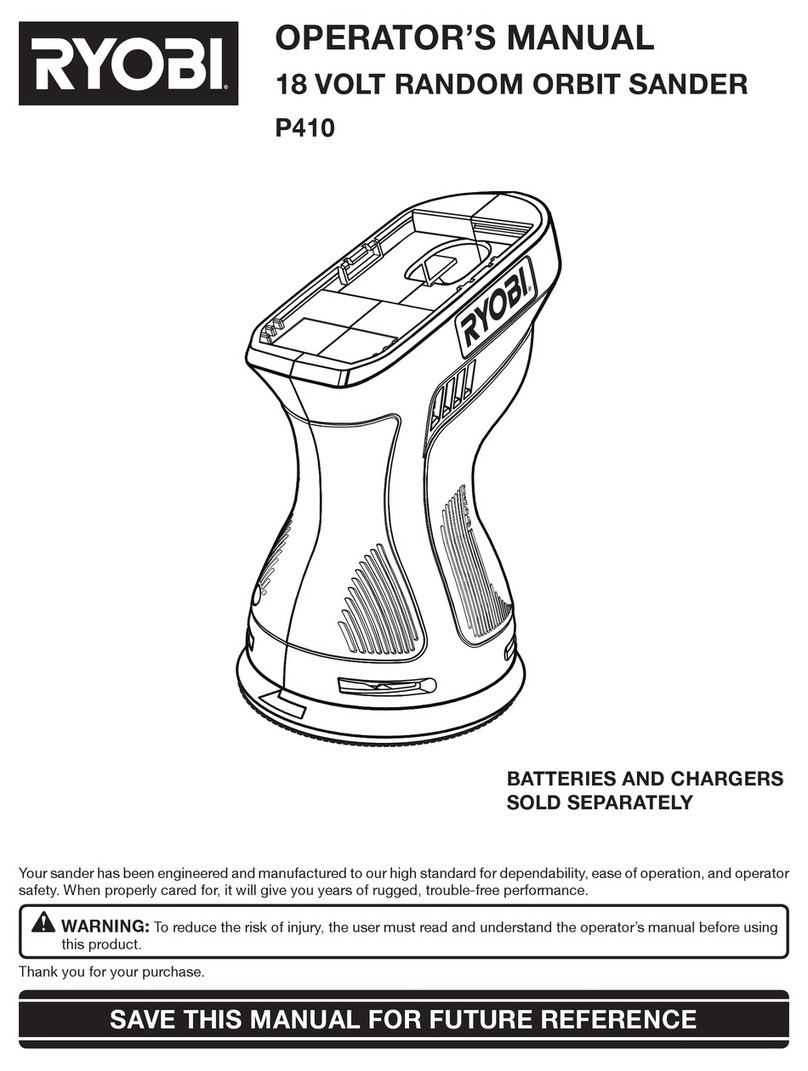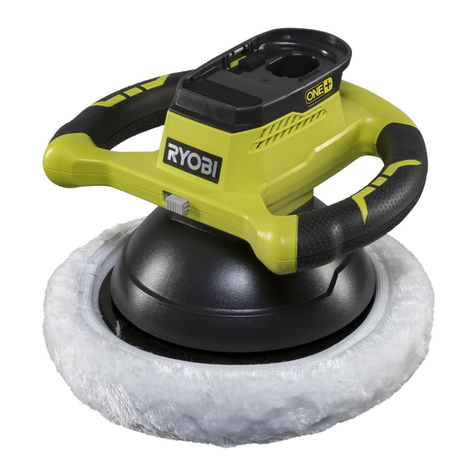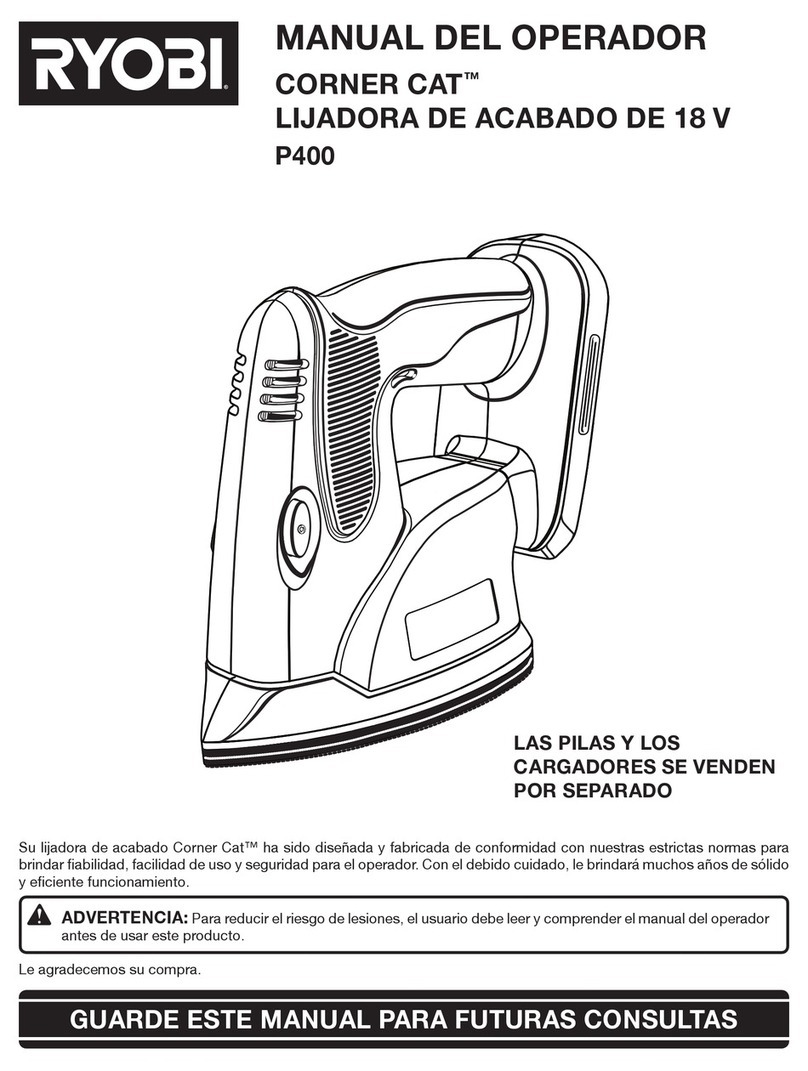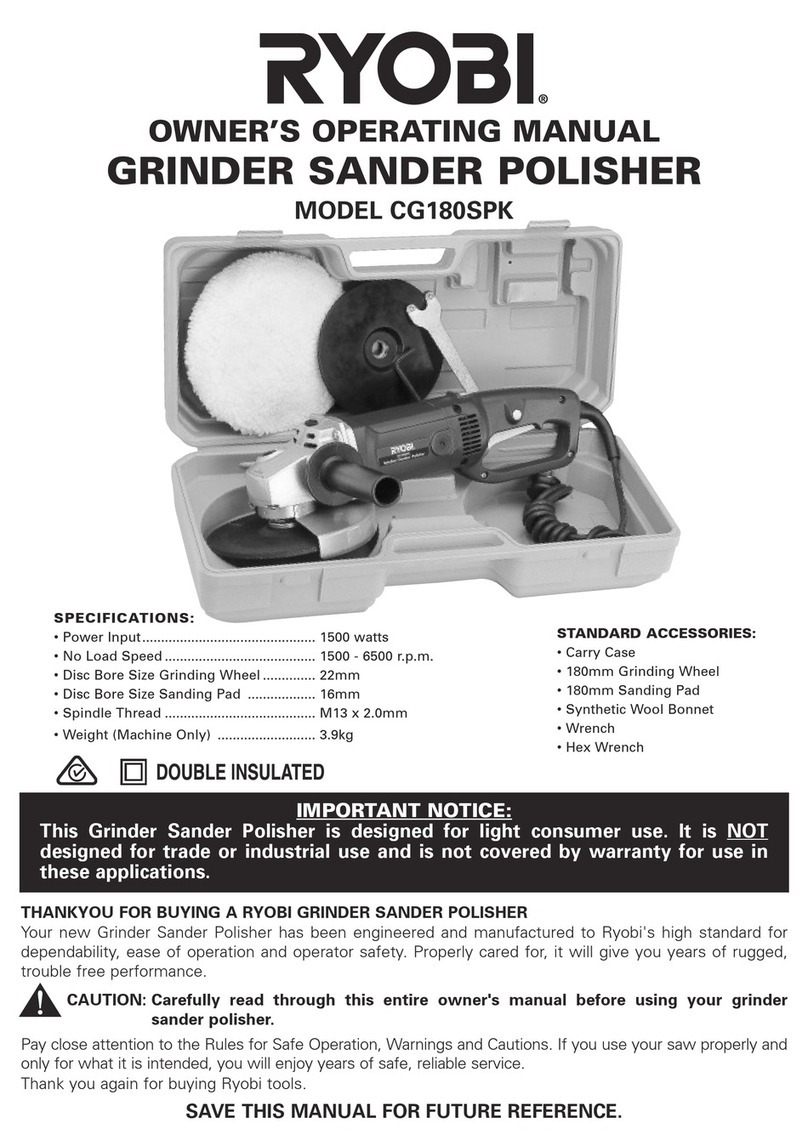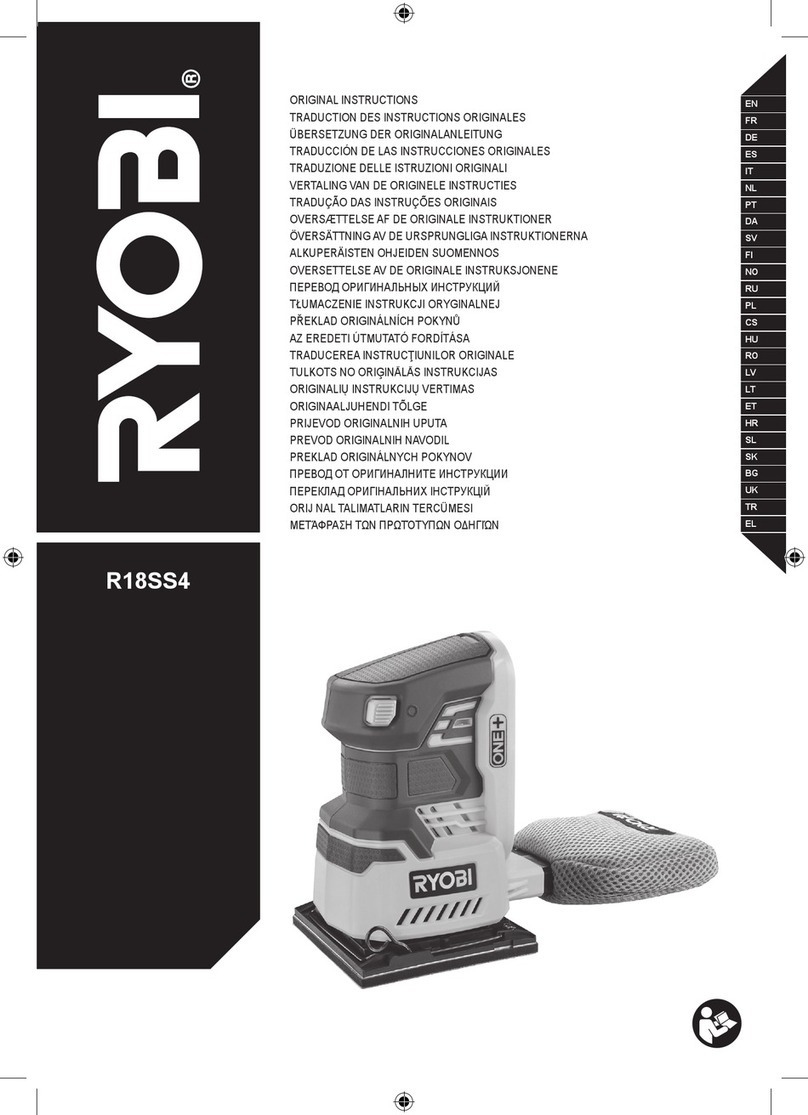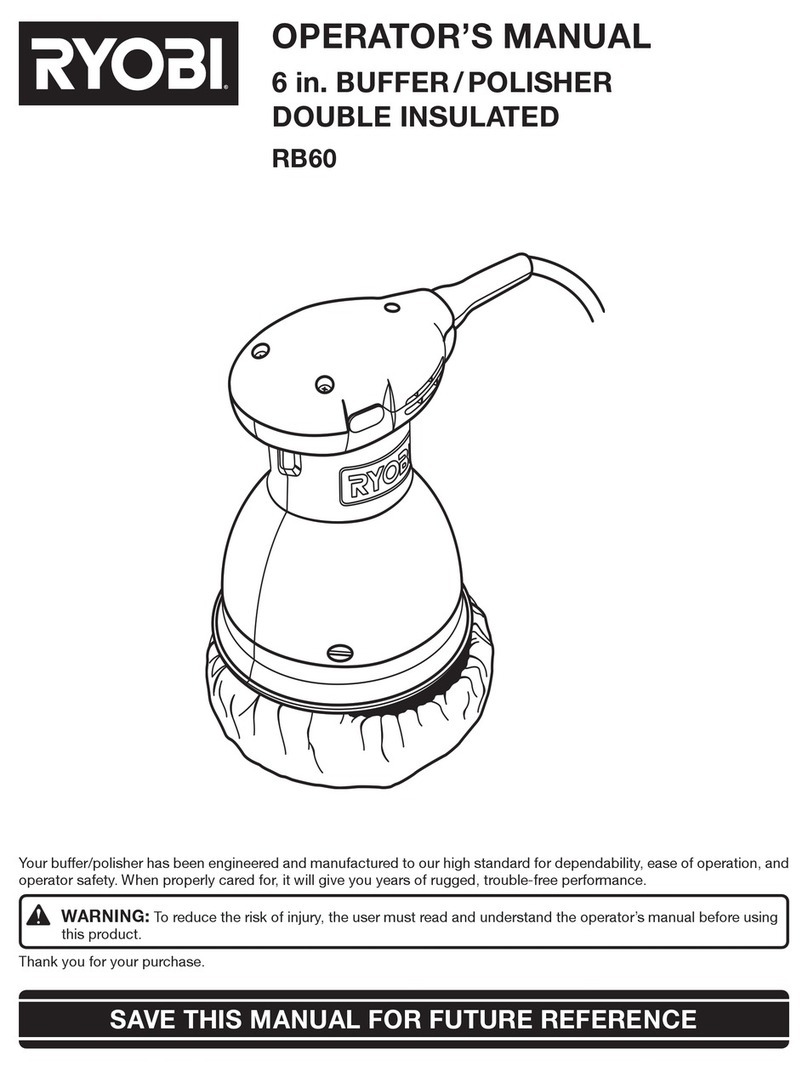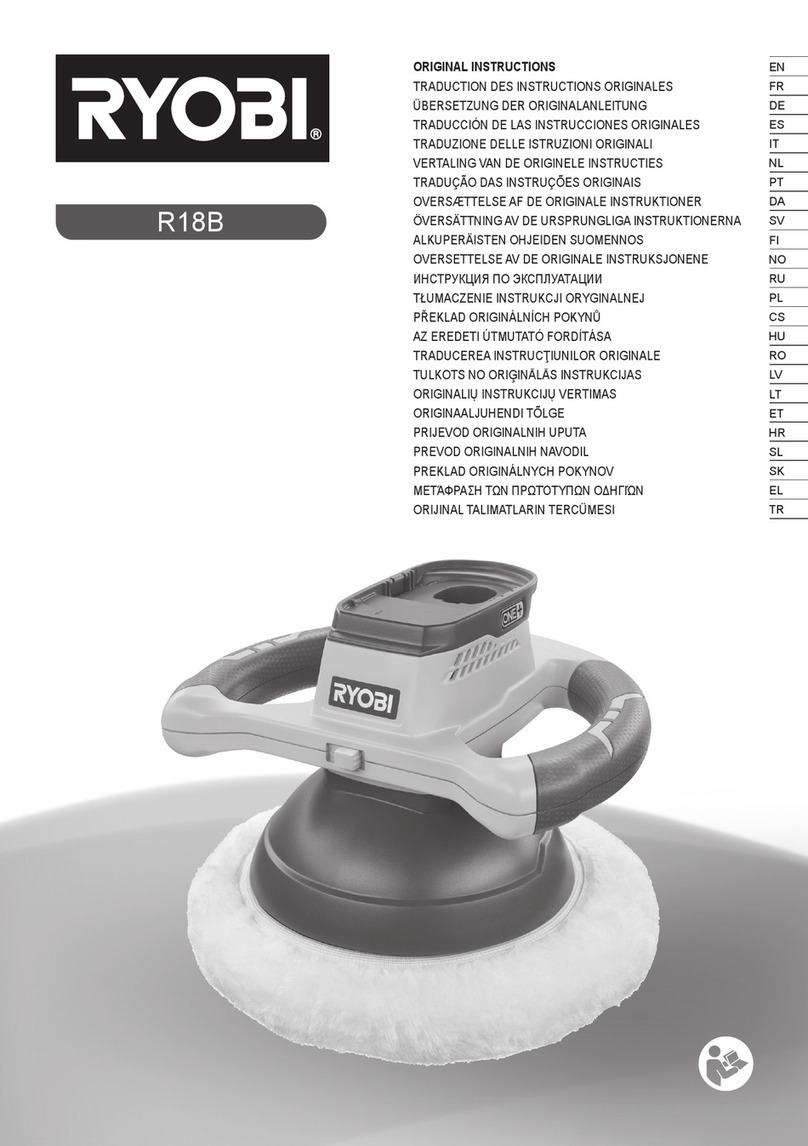
2
English
WARNING
Ensure the air supply is clean and does not exceed
90psi while operating the tool. Too high an air pressure
and unclean air will shorten the product life due to
excessive wear, and may be dangerous, causing
damage and/or personal injury.
LUBRICATION
An automatic in-line filter-regulator-lubricator is
recommended (Fig. 8) as it increases tool life and keeps
the tool in sustained operation. The in-line lubricator
should be regularly checked and filled with air tool oil.
Proper adjustment of the in-line lubricator is performed by
placing a sheet of paper next to the exhaust ports and
holding the throttle open approximately 30 seconds. The
lubricator is properly set when a light stain of oil collects
on the paper. Excessive amounts of oil should be avoided.
It becomes necessary to store the tool for an extended
period of time (overnight, weekend, etc.), it should receive
a generous amount of lubrication at that time. The tool
should be run for approximately 30 seconds to ensure oil
has been evenly distributed throughout the tool. The tool
should be stored in a clean and dry environment.
●It is most important that the tool be properly
lubricated by keeping the air line lubricator filled
and correctly adjusted. Without proper lubrication
the tool will not work properly and parts will wear
prematurely.
●Use correct lubricant in the air line lubricator. The
lubricator should be of low air flow or changing air
flow type, and should be kept filled to the correct
level. Use only recommended lubricants, specially
made for pneumatic applications. Substitutes may
harm the rubber compounds in the tools O-rings
and other rubber parts.
IMPORTANT!
See Figure 8.
If a filter/regulator/lubricator is not installed on the air
system, air operated tools should be lubricated at least
once a day or after 2 hours work with 2 to 6 drops of oil,
depending on the work environment, directly through
the male fitting in the tool housing.
LOADING AND OPERATION
WARNING
Drain the air tank daily. Water in the air line will
damage the tool.
■Clean air inlet filter weekly.
■Line pressure should be increased to compensate for
unusually long air hoses (over 8 metres). The hose
diameter should be 9.52 mm (3/8”) I.D.
■Keep hose away from heat, oil and sharp edges. Check
hose for wear, and make certain that all connections
are secure.
■Air tools should not be used in a potentially explosive
environment.
■There is a risk of explosion or fire due to the material
being processed.
■There is a risk of cutting.
■There is a risk of drawing in or trapping of long hair,
loose clothing.
■WARNING! Cutting off tools shall not be used.
■Personal protection and dust collection device shall be
chosen with regard to the material being worked upon.
■If the tool cannot be used anymore, make sure to
dispose of it so as not to impose hazards to people
and the environment.
■No spare parts are to be used, when these affect the
health and safety of operators.
■There is a risk of a whipping compressed air hose.
MAINTENANCE
WARNING
Disconnect tool from air supply before changing
accessories, servicing or performing maintenance.
Replace or repair damaged parts. Use genuine parts
only. Non-authorized parts may be dangerous.
■Keep the tool safe by regular maintenance.
■Lubricate the tool daily with a few drops of air tool oil
dripped into the air inlet.
■Clean the tool after use. Do not use worn out or
damaged sockets.
■Loss of power or erratic action may be due to the
following:
– Excessive drain on the air line. Moisture or
restriction in the air pipe. Incorrect size or type of
hose connectors. To remedy check the air supply

